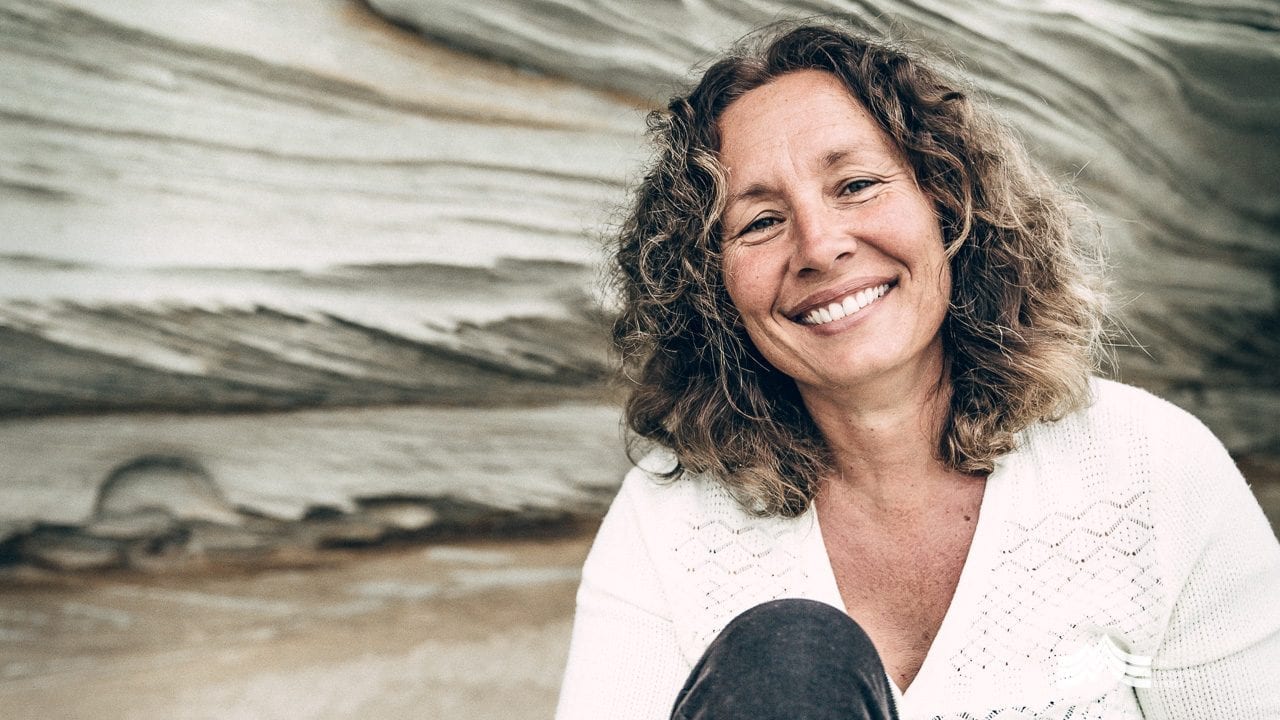With warm mellow tones and slow considered thoughts, Ruth Langford is a joy to listen to. Sitting in her sprawling country garden hearing her explain her values is a special experience. She is one of those people you could listen to all evening. Wise but fun, considered but spontaneous, reflective but fresh.
Ruth calls a rambling weatherboard farmhouse home. “It used to house the only shop en route to Port Arthur,” she explains. “In the mid-1800s, coaches used to pull up out the front to get a hot meal on the way past, and a little later on dances were often held in our old barn. It has its own history.”
With an interest in storytelling and passing knowledge down through generations, Ruth is the driving force behind a special local event. It’s the eve of the Nayri Niara Good Spirit Festival, a biannual three day gathering of music, ceremony, knowledge, sharing and the arts. As Ruth explains, “The festival brings people together on Country and supports a deep exchange of knowledge. It started in my front garden down on Bruny Island back in 2009 and has become an important means to bring people together and share stories.”

Ruth’s passion for community can be traced back through her upbringing. She speaks purposefully about her childhood, “After they met, my dad brought my mum to Tassie for a holiday… and they simply never left. But despite the idyllic location that they fell in love with, they battled attitudes against their own relationship: an Aboriginal woman and a white Australian man. It was undoubtedly difficult for them.”
“I grew up in a highly charged political era. My parents set up the Tasmanian Aboriginal Centre and worked tirelessly to improve the living conditions for our people. I was often attending marches and was very aware of community attitudes. I remember feeling the general public were denying basic freedoms to Aboriginal people…the very people I had such a clear connection with. On the other hand, I’d hear Aboriginal people speak harshly of white men and yet here I was with a white father who was one of the most caring and loving people I knew. The confusion tore at my eternal soul and consciousness.”
“As a teenager I had a real conflict around identity. I think this manifested in my twenties…I lost my way and found myself abusing my health….I wasn’t in a good way.” Ruth pauses as she recalls what changed, “I remember very clearly when the doctor told me I was pregnant. It was a definite turning point and it’s when I discovered that calling to Country is a real thing.”
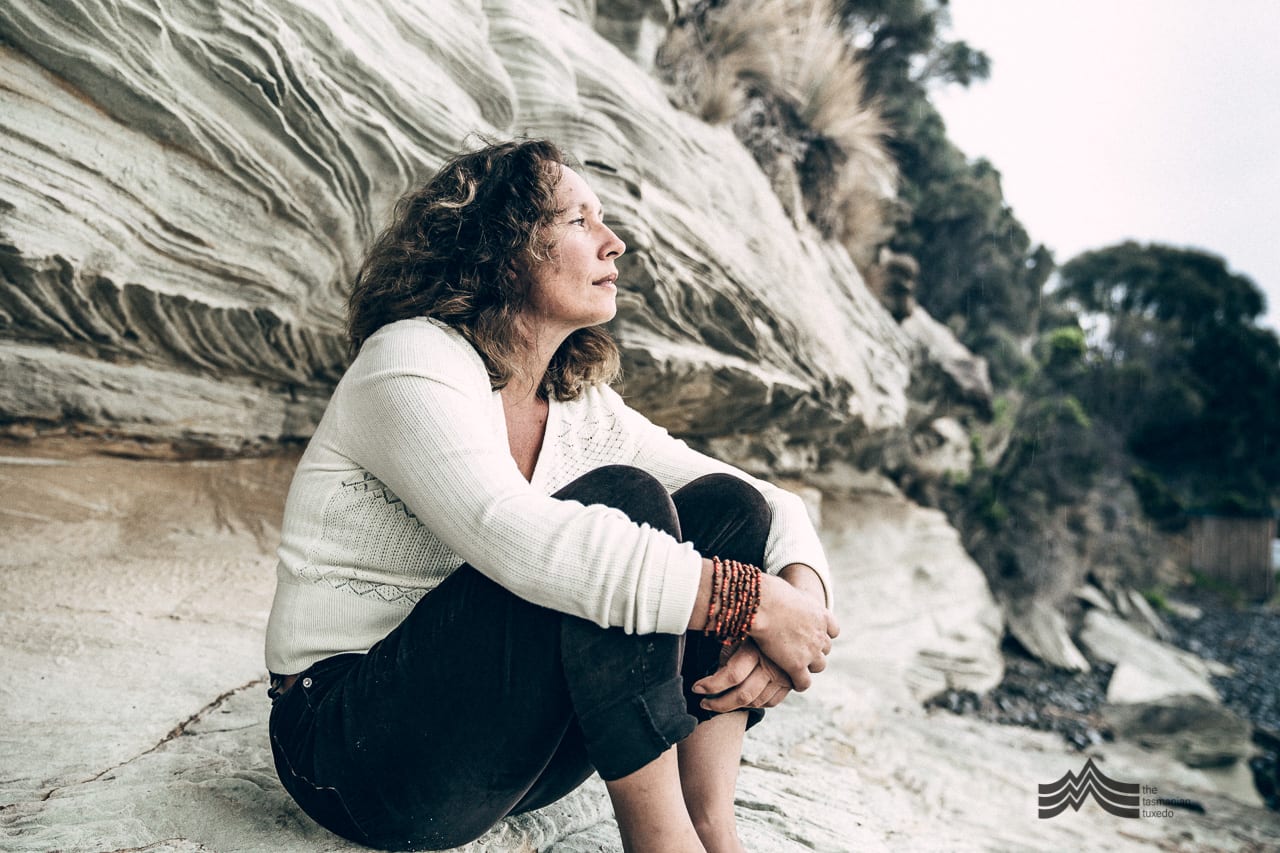
Ruth explains openly, “I knew I had got myself into a bad situation. I was lost and distraught…I found myself crying to the trees and knew I had to change. It was a profound moment and it set me on a different course in life.” She ponders over the connection to Country and culture, and the powerful pull that transpired.
“I’ve done a lot of travelling in my time,” says Ruth. “I’ve spent time with elders around the world and shared deep stories. I didn’t fully appreciate them at the time, but I’m glad that now I can. My understanding of my connection to Country and to the Sacred has evolved deeply and that’s a real blessing.”
Today Ruth embraces both Australian and Aboriginal history and has identified a need for people, spaces and places to come together. “People don’t have to be just one thing,” she says slowly. “Nayri Niara was first born to unite ancient traditions with modern innovations. It’s about bringing people together to share in a meaningful knowledge exchange. There’s true generosity in sharing with others.”
“A group of my close friends often talked about how we loved festivals and how they fill a void in society. It’s about connection. There’s been a collapse of organised religion in society in recent times, and with that there’s less opportunity for families to come together, question moral values, plan service and create community. “Festivals such as this have stepped into that void. They’re gatherings offering a plethora of opportunities to be your best, have rich conversations, connect, heal and share knowledge in a community context.”
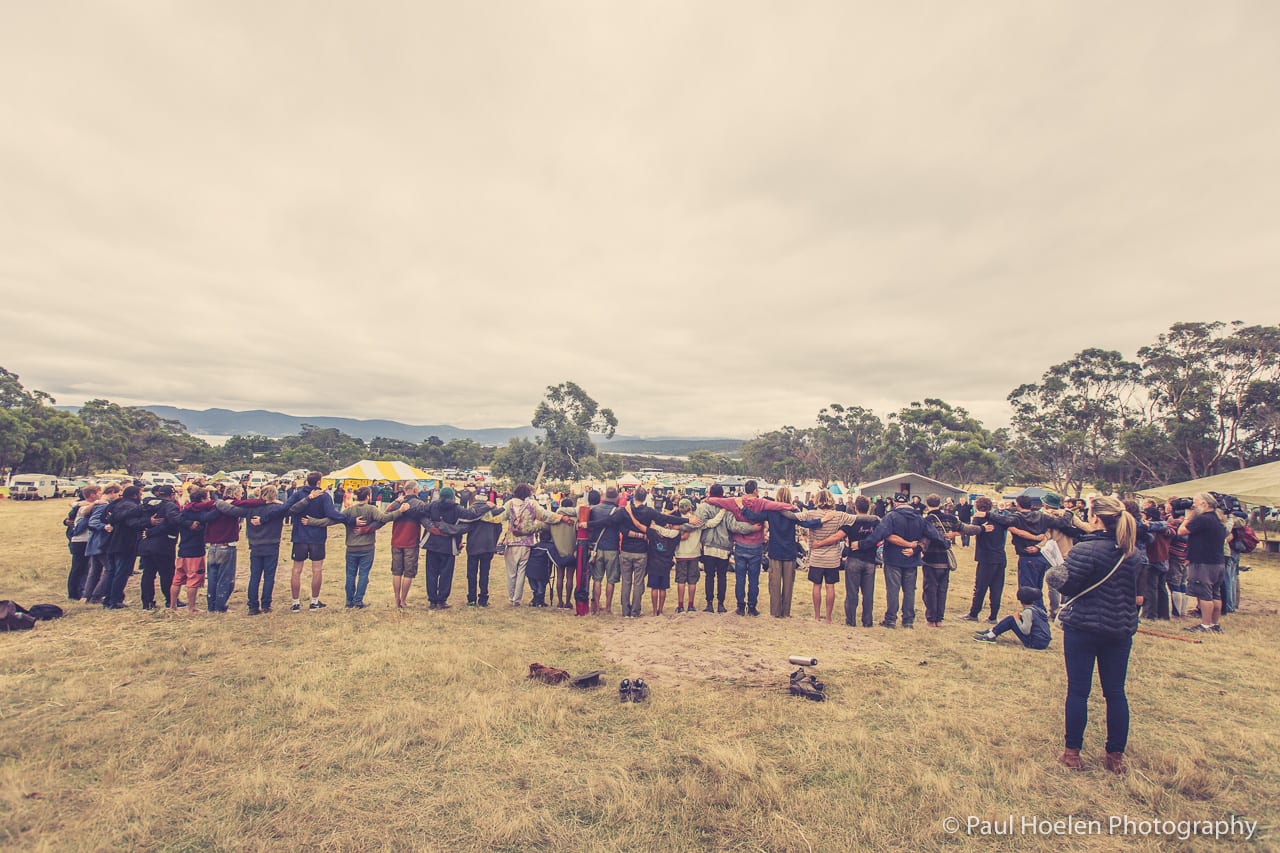
Now in its fifth iteration, Nayri Niara has grown from a gathering of 200 at Ruth’s home on Bruny to numbers being capped at 1000 this year. “The first year was amazing,” describes Ruth. “We had a beautiful healing circle and many found the experience transformative and motivating. People enjoyed connecting with each other so it was an easy decision to hold another one. We keep the numbers to a manageable size to maintain a sense of intimacy and that feeling of a village community.” She continues, “People often comment that they like the sense of space but of not being lonely.”
Although always remaining on Bruny Island, the site has changed each year as a way of responding to call of Country. The event is open to all and orientated towards openness and families. “The program is mindful of all generations and there’s something for everyone,” Ruth explains. “It brings Indigenous and non-indigenous people together. Parkour, spear throwing, film challenges, dancing, feasting, ornithology, storytelling, art…everyone can find something to find themselves in.”
“This year we’re welcoming a team of film makers to support people to make a short one to three minute film,” says Ruth. “It’s a powerful way to share a story and we’ll watch them all on a bush screen one evening. It’s also a relevant way to share with young people in our community and encourage them to be mindful of the stories around them.”
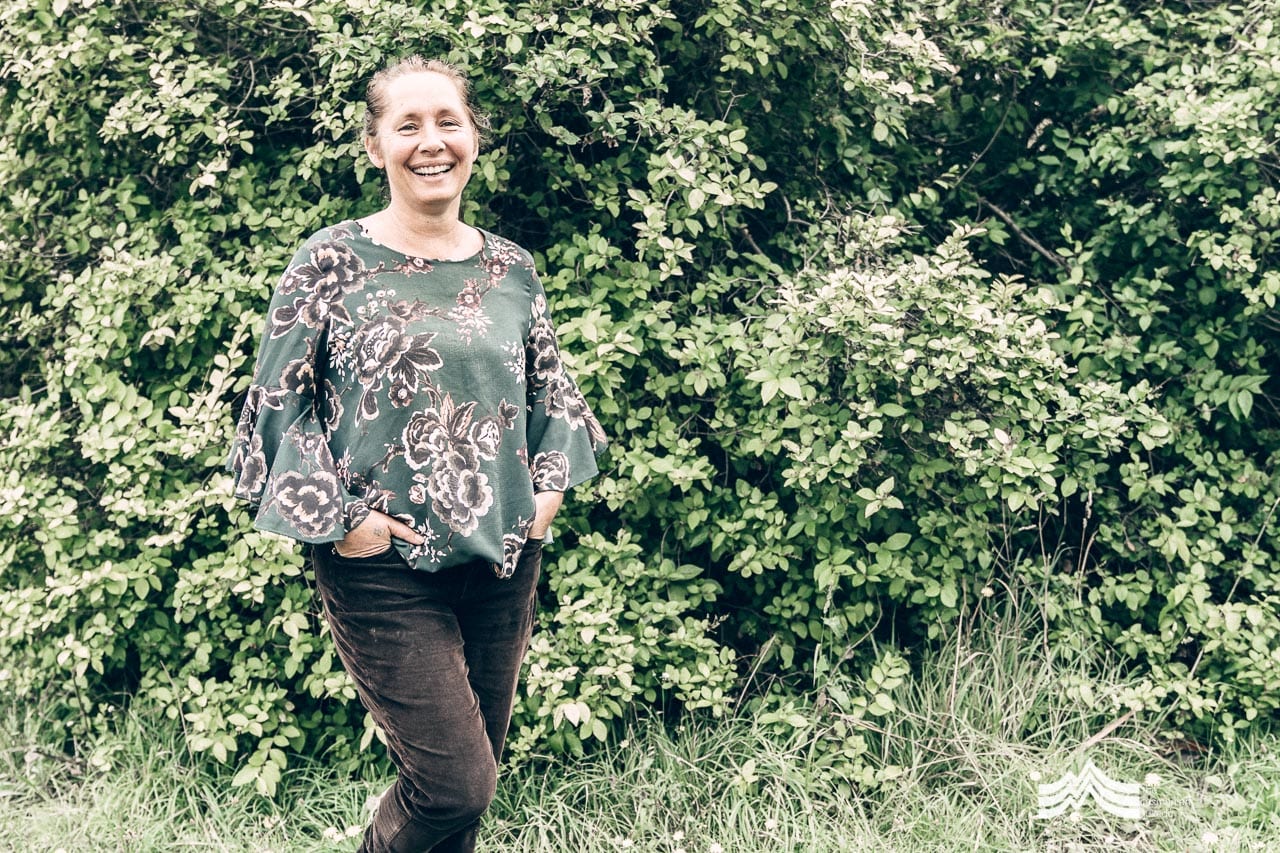
“I just love festivals,” says Ruth, her hazel eyes smiling. “They provide spaciousness in our lives and provide an opportunity to let go of stress and time. The program is fluid, we start things when we’re ready and never put pressure on people to start things at a set time. Sometimes an elder decides to share a story in the moment…so we just stop and do that then. That ability to pause and listen really encourages respect amongst our younger generation.”
Ruth draws a connection from her own childhood to the Nayri Niara experience. “My children were fortunate to grow up in a household of four generations. Today, many children don’t have that and may not even know their own grandparents. This is a way for people to access family and connect with the community. Many elders tell me that young people they met at the festival often drop in on them for a visit…beautiful strong bonds have formed from the time they spent together, and that’s pretty special.”
The experience is not confined to the festival itself. “We have on Country artists and a community exchange in the week leading up to the event,” says Ruth. “This year Allan Mansell is supporting a series of print making workshops with young men. This will culminate in an exhibition during the festival itself.”
“That lead up to the festival is lovely in itself,” muses Ruth. “We usually hold a shared feast and welcome our elders and knowledge keepers. It’s a beautiful intimate time that creates the inner circle. As the week goes on the circle expands and the connections grow.”
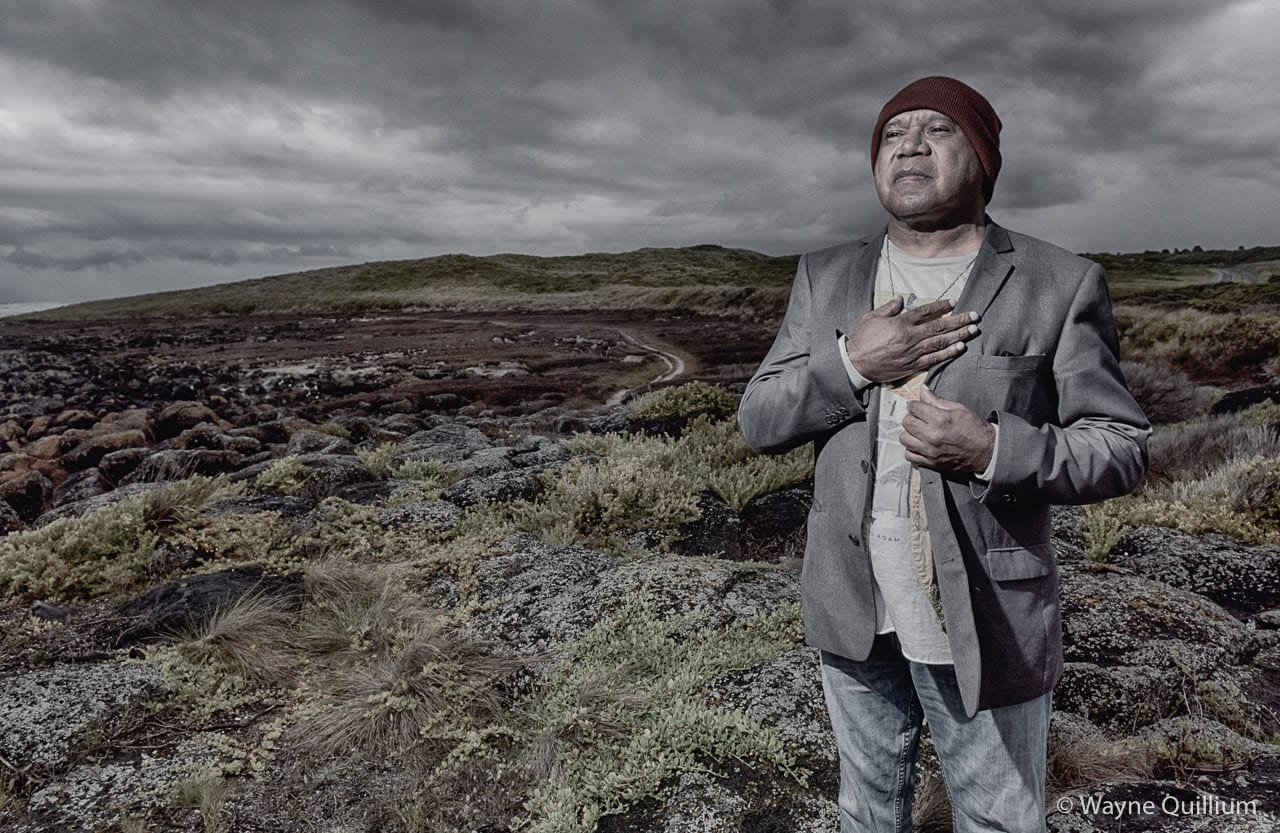
“The end of the festival is marked with a final ceremony. They are different every time…always incredible.” She goes on to reminisce about one particular past experience, “In the past, Bruny itself has been a real point of trauma due to the great atrocity of whaling. Many felt the whale bones displayed across the island needed to be addressed.” Ruth describes how the men made a canoe that year and the women wove a kelp basket. “We loaded the cremated whale bones into the basket and set it into the canoe. Carrying it to the point, we lit the canoe and watched it burn on an incredibly still evening.” As a means of explanation she adds, “Aboriginal people tend to cremate their bodies and return elders to dust.” Recalling a vivid memory, Ruth finishes, “A stunning umbra came around the sun that evening…and incredibly that next season was the first time a whale mother bought a calf back into the Derwent estuary.”
It’s clear this is something that comes from within. “I’m blessed to have had a great time,” says Ruth. “The festival is supported by a core group of the community who have the energy and generosity to bring it together. It arises from a very small budget and it’s from a heartfelt desire to co-create and offer something better that it all happens. Beautiful friendships are formed during the planning.” She laughs, “It’s a whole lot of fun in the intense lead up and we all come out the other end laced in excitement, celebration and strong bonds.”
The Nayri Niara Good Spirit Festival provides opportunities for people to realign with traditions and cultural practices. “People enjoy reclaiming our traditional values of honour, respect and equality, and listening to the voice of their inner spirit in order to promote healthier communities for the future.” As Ruth affirms, “It’s really about fostering good spirit.”
“Whatever the motivation, storytelling is really at the core of our event. When a story is told it’s also important to honour the lineage of that story…to explain where that knowledge has come from and how it’s been handed down.”
“People choose to be involved for all sorts of reasons,” Ruth continues. “I love deepening my understanding of ancient knowledge and mindfulness and considering how that relates to modern research. There are so many parallels…it’s intriguing. For others, the festival becomes a healing journey…sometimes for self, sometimes for family, sometimes for community.”
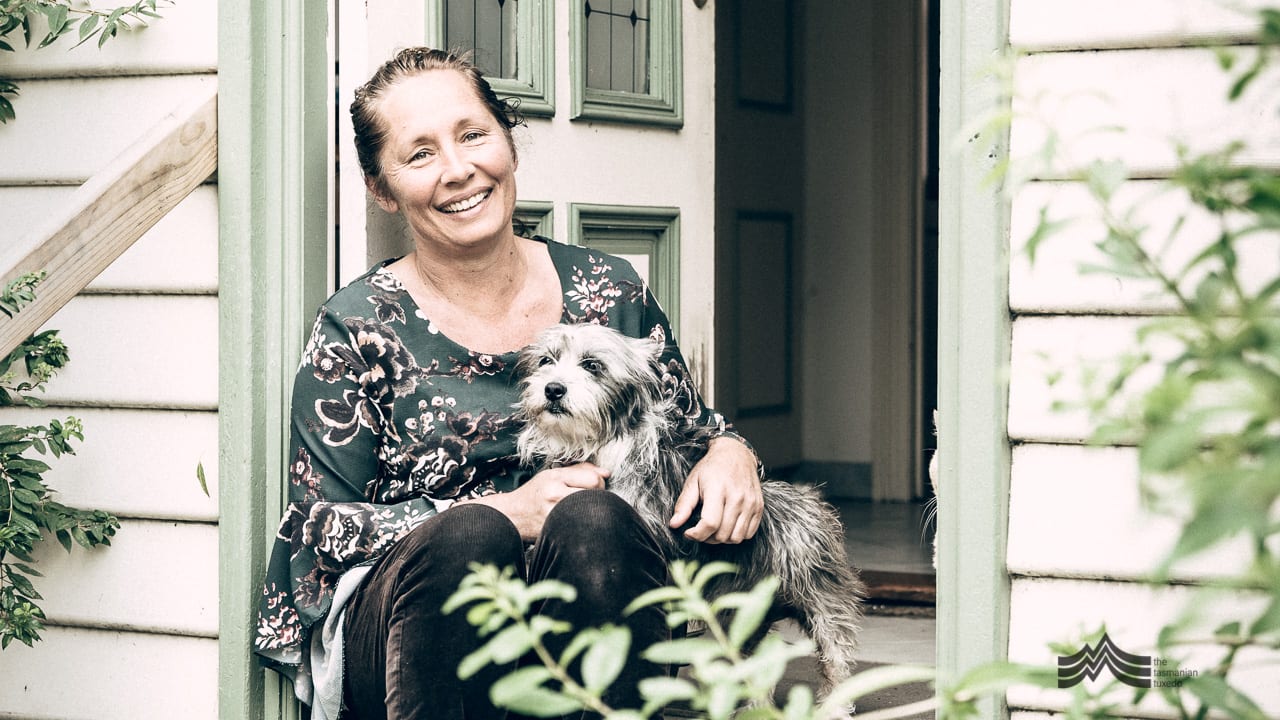
The Nayri Niara Good Spirit Festival will be held on Bruny Island from March 9 to 11 2019. Explore the full program and find out more via the website or Facebook page.
